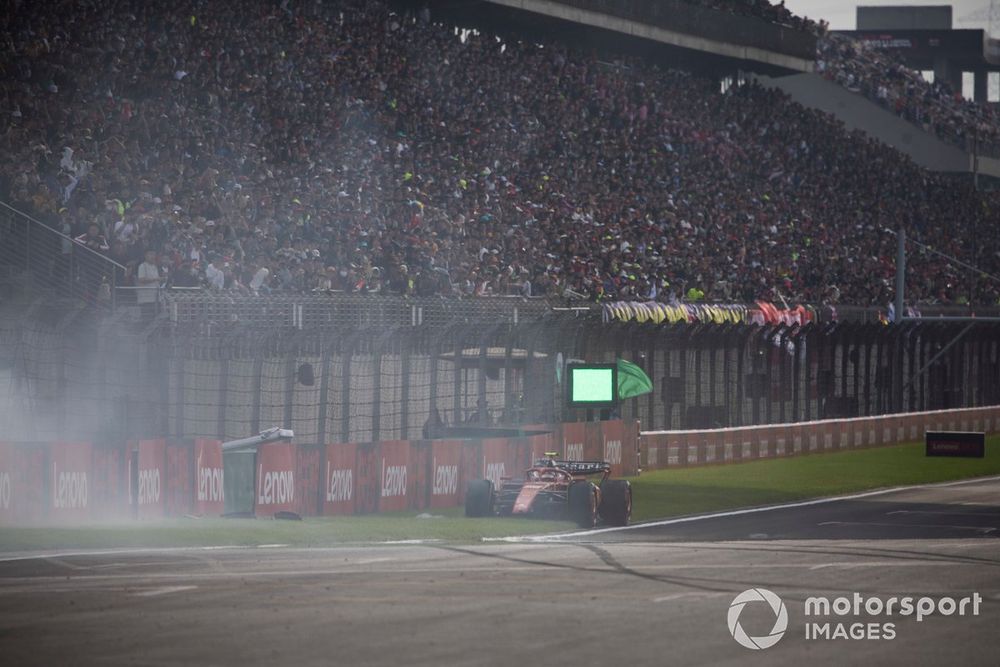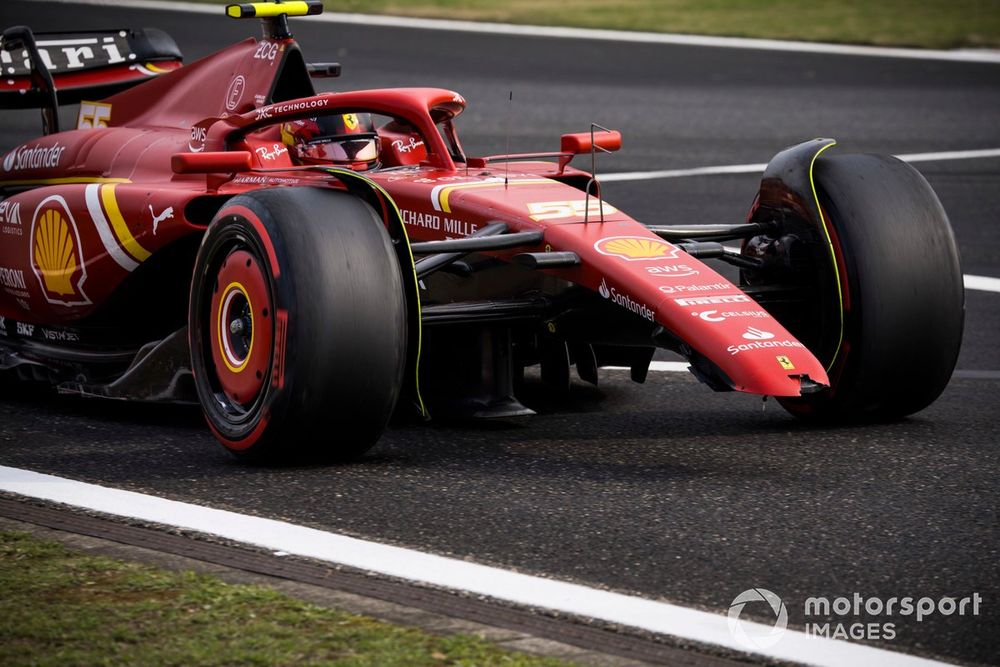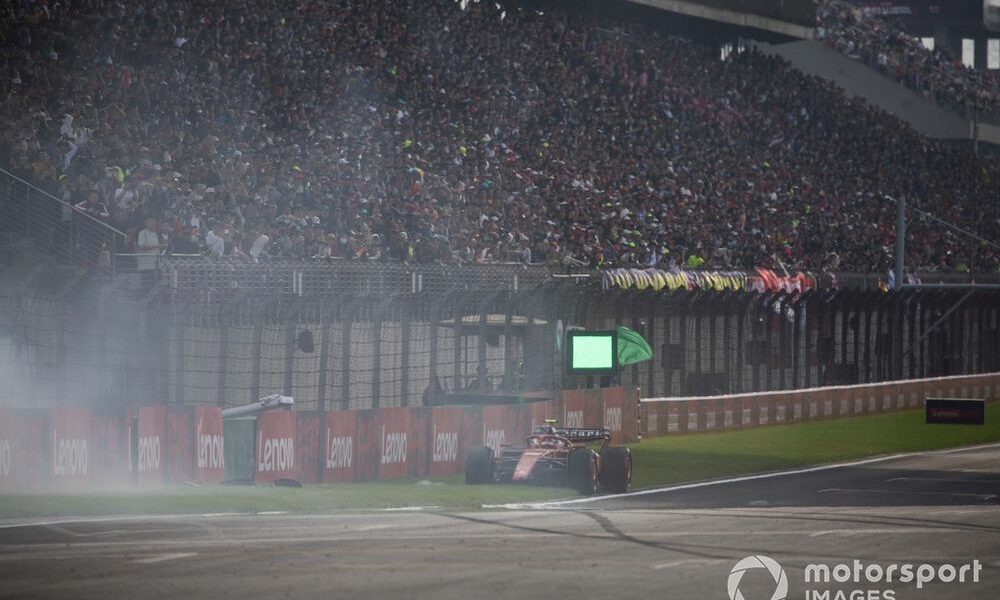Aston Martin had filed a protest against the result in the wake of Ferrari driver Carlos Sainz’s off-track excursion in Q2.
Sainz spun out of the final corner and tapped the tyre wall on the opposite side of the circuit, causing a red flag as he was stationary for over a minute.
Article 39.6 of the F1 sporting regulations states that “any driver whose car stops on the track during the qualifying session or the sprint qualifying session shootout will not be permitted to take any further part in that session.”
But Sainz managed to get going again and following quick repairs was able to put in a lap that advanced him to Q3. He thereby knocked out Aston driver Lance Stroll, who missed the cut in 11th place.
The rule is meant to prevent drivers from rejoining the session after receiving assistance from marshals or recovery vehicles, and not those who are able to drive off under their own power.
But the exact wording of the article doesn’t mention that, opening the door for Aston to have a go at protesting the result.
However, the stewards have still dismissed Aston’s protest as they felt it was clear from “numerous examples” as to how the rule would be applied.

Carlos Sainz, Ferrari SF-24, crashes during Q2, causing a red flag
Photo by: Sam Bloxham / Motorsport Images
“It is clear that the plain language of Art. 39.6 suggests that so long as a car “stops” on the track during a qualifying session, that car should not be permitted to take further part in the session,” the stewards’ verdict read.
“However, it was clear from the examples cited by a number of the team managers present and the FIA, that this was not how this rule was applied by the teams and the FIA in the past.”
One example mentioned was Williams’ Alex Albon rejoining qualifying in the 2022 Canadian Grand Prix after being stopped for 40 seconds, to which Aston argued that Sainz’s stop for a period of 1m17s was too long.
The stewards noted that the rule’s ambiguity over what constitutes a “stop” had actually been the subject of discussion in the past.
But because no agreement between the teams could be reached over which time limit to add to the regulations, it was left up to the discretion of race control.
“The FIA team explained that so long as the car was able to restart and continue from a stopped position within a reasonable time, that would ordinarily be permitted.
“The teams themselves said that they had previously attempted to agree what they considered to be a reasonable length of time before a car would be considered ‘stopped’.

Carlos Sainz, Ferrari SF-24, heads back to the pits after a crash which caused a red flag in Q2
Photo by: Sam Bloxham / Motorsport Images
“Unfortunately, they were not able to come to a final agreement on the maximum time allowed.”
The stewards also said they were shown notes from an F1 Commission meeting at Spa last year where the consensus was to add the ‘outside assistance’ element to article 39.6, but that change wasn’t made in the 2024 sporting regulations.
They concluded that “even if the plain wording of Article 39.6 warranted a more stark conclusion, the consistent practice in the sport to date did not warrant a setting aside of the discretion exercised by race control by us as stewards.”

